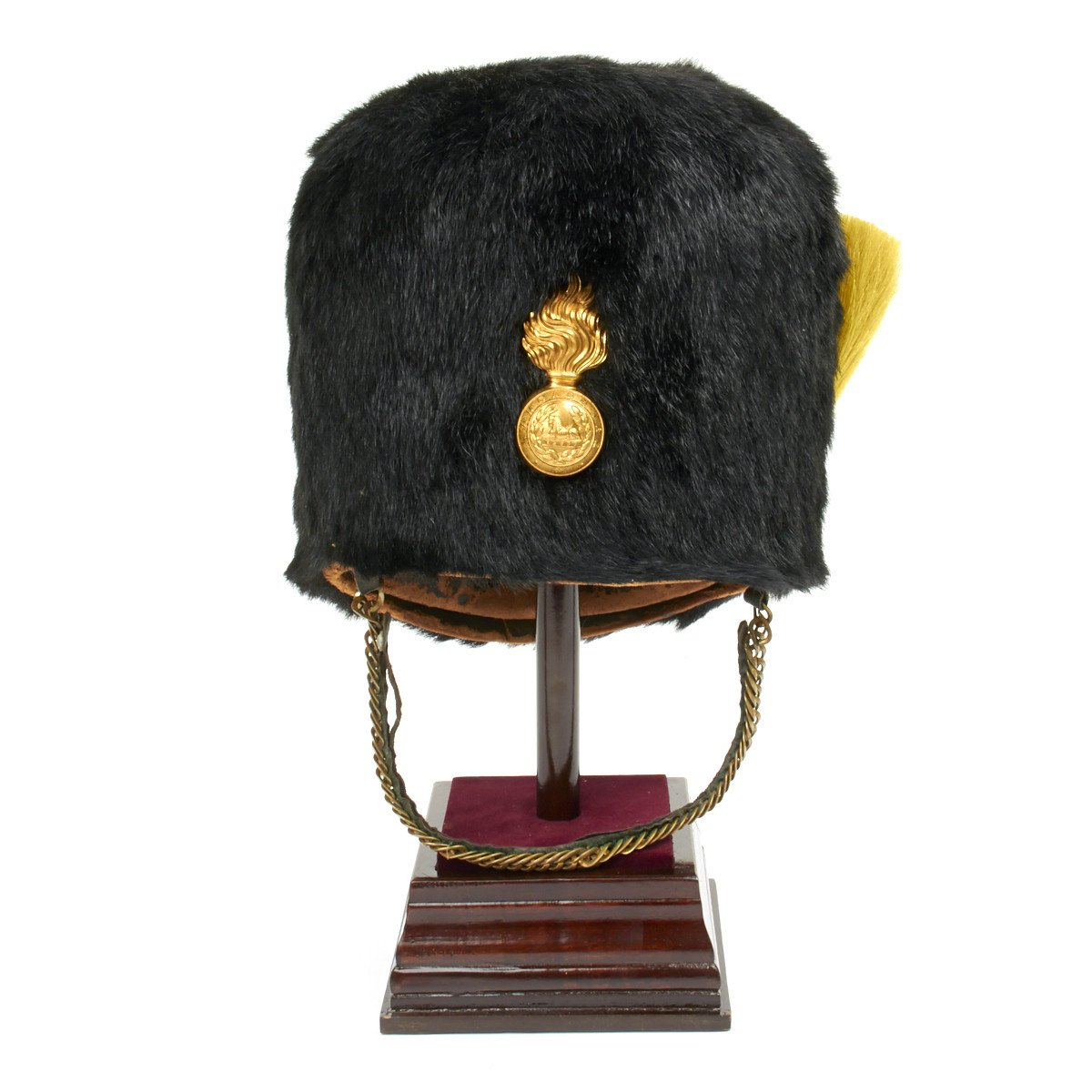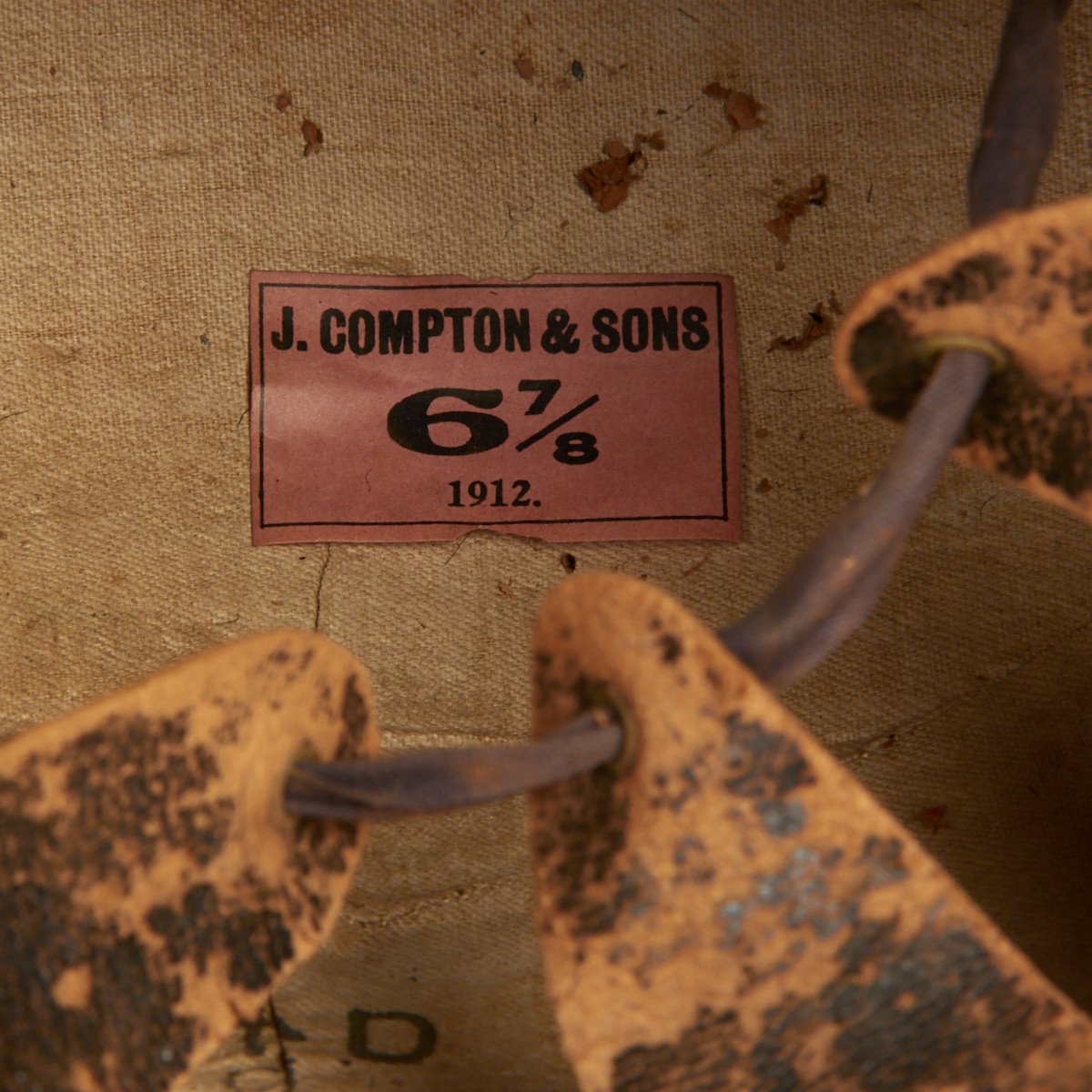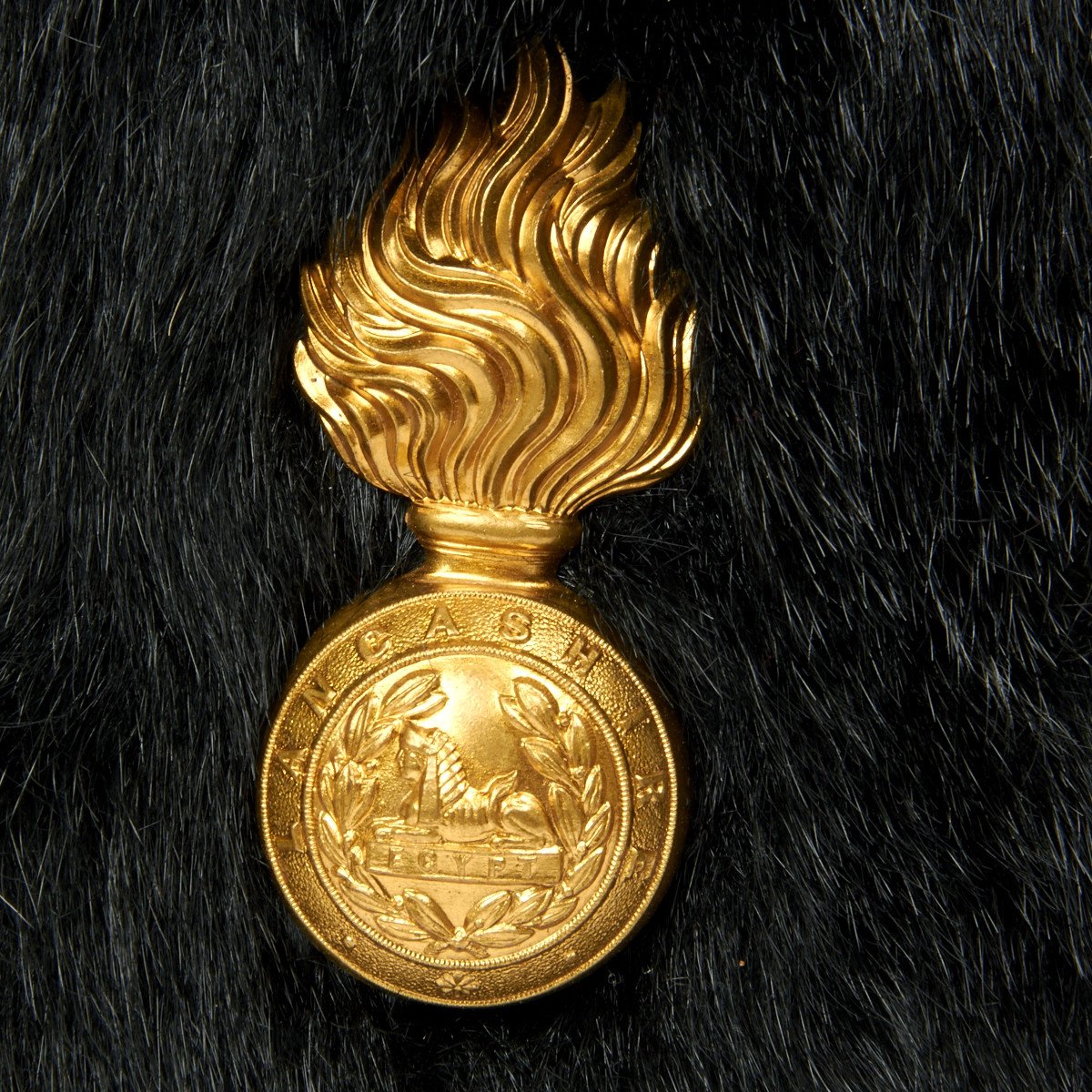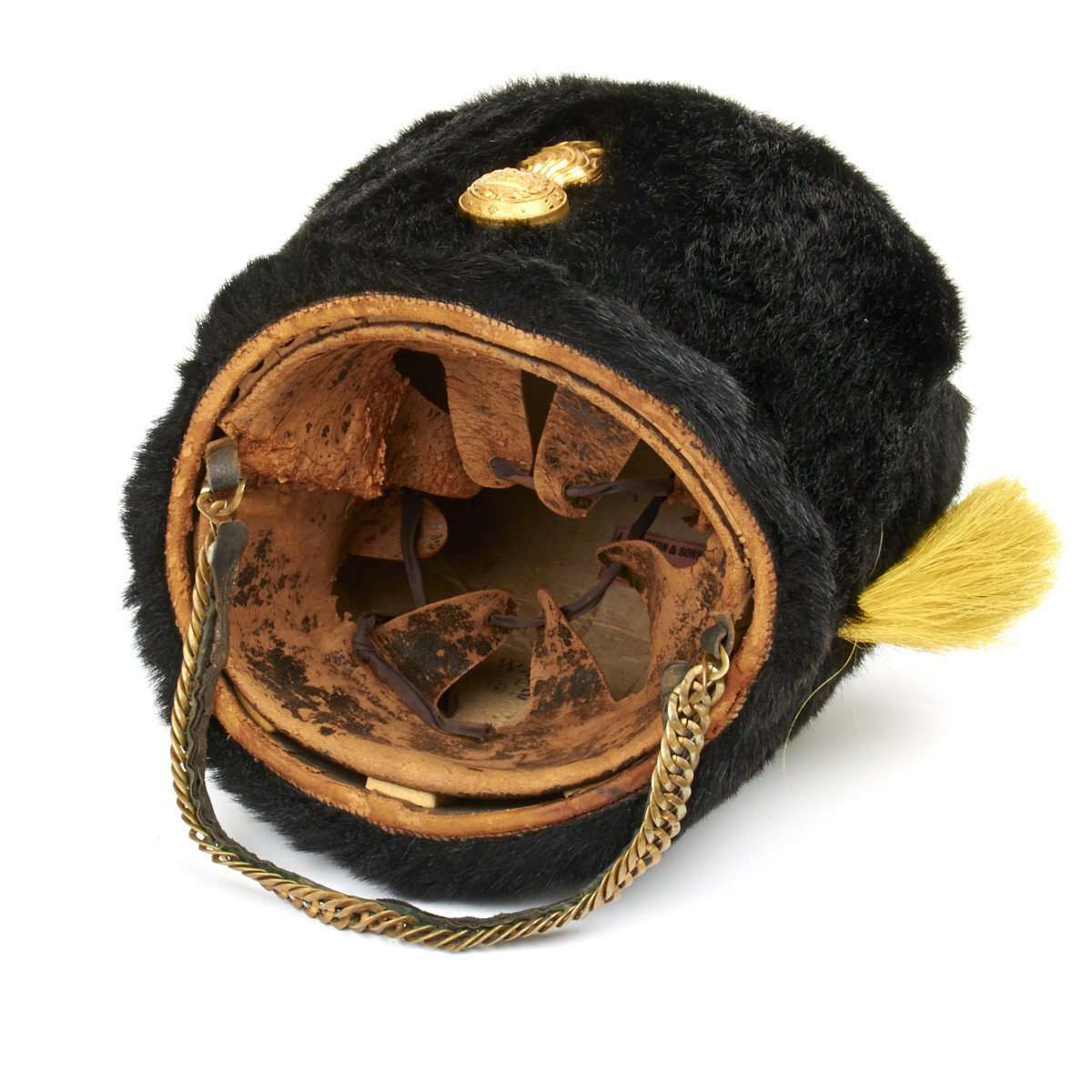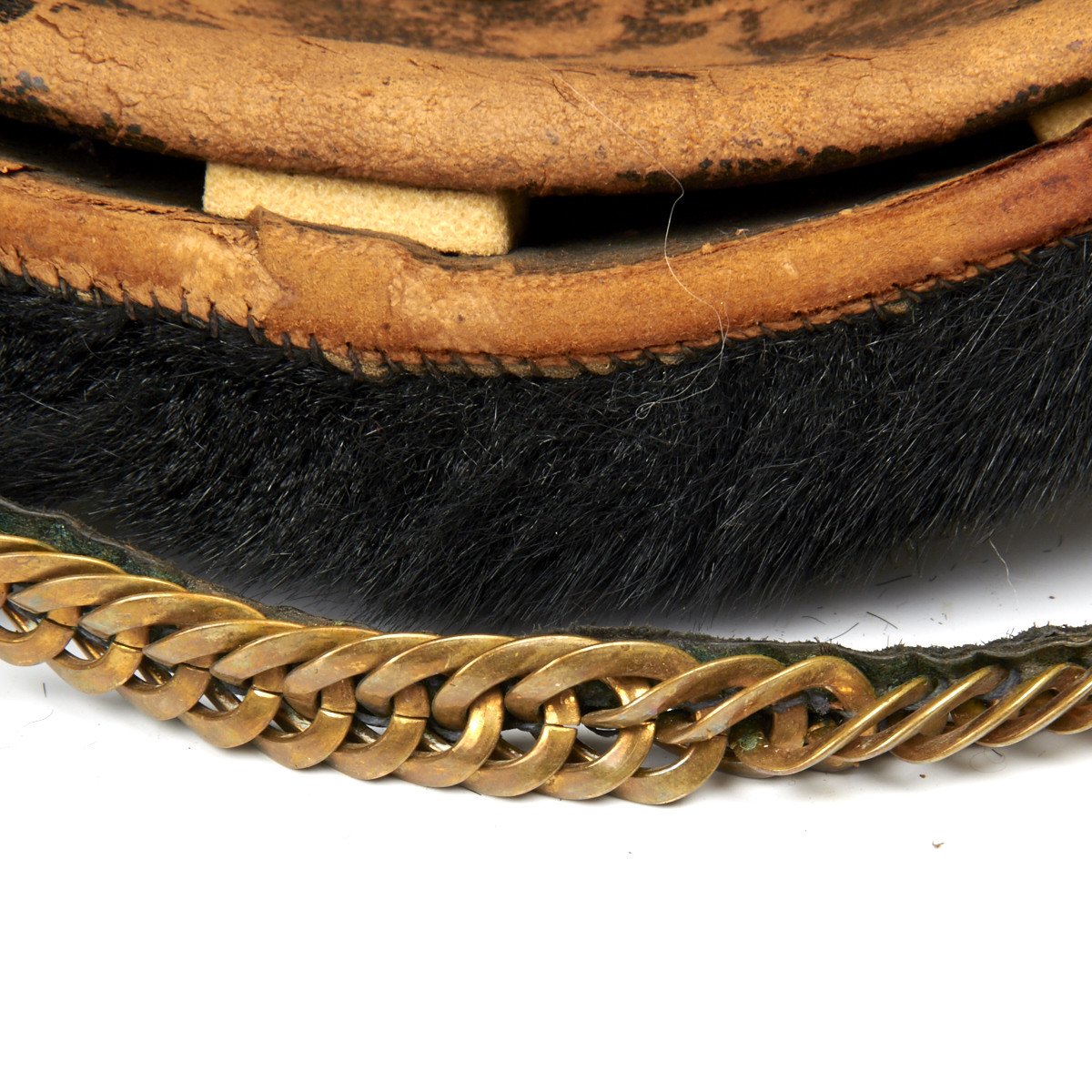Original British WWI Lancashire Fusiliers Bearskin Busby – Dated 1912 Original Items
$ 895,00 $ 223,75
Original Item: Only One Available. A fine example, still bearing the 19112 dated manufacturer’s label that reads:
J. COMPTON & SONS 1912
Size 6 7/8
This is an original shorthaired bearskin Busby helmet of the legendary LANCHASHIRE FUSILIERS. It comes complete with original brass chained chinstrap, yellow horsehair plume and leather liner that shows wear from use.
History of the Lancashire Fusiliers:
The Lancashire Fusiliers was an infantry regiment of the British Army that saw distinguished service through many centuries and wars, including the First and Second world wars. The regiment was amalgamated with other Fusilier regiments in 1968 to form the Royal Regiment of Fusiliers. Some of the Regiments most famous soldiers are Edward Cornwallis, James Wolfe, John Parr, Robert Ross and J. R. R. Tolkien.
Peyton’s Regiment of Foot (1688-1751)
The regiment was formed in 1688 in Devon under Sir Richard Peyton as Peyton’s Regiment of Foot. (The regiment’s name changed according to the name of the colonel commanding until 1751.) The regiment served in the Glorious Revolution under King William III and at the Battle of the Boyne in July 1690 and Aughrim in 1691. During the War of Spanish Succession (17011714), it aided in the capture of Spanish galleons at Battle of Vigo Bay in 1702. The regiment distinguished itself at the Battle of Dettingen in June 1743, and at Fontenoy in May 1745, and served in the Battle of Culloden in April 1746.
20th Regiment of Foot (1751-1782)
In 1751, the regiment became the 20th Regiment of Foot, often written in Roman numerals ‘XX Foot’, (hence the nickname The Two Tens). During the Seven Years’ War the regiment earned honour at the Battle of Minden on 1 August 1759, when, as an infantry formation, they stood up to and broke a French cavalry charge. During the American Revolution the regiment was sent to Quebec in April 1776 and assisted in the relief of Quebec in May 1776. Serving under General John Burgoyne for the remainder of the Canadian campaign, they later surrendered along with General Burgoyne at Saratoga.
East Devonshire Regiment (1782-1881)
The 20th Regiment of Foot was designated the East Devonshire Regiment in 1782. The 2nd Bn was raised in 1858.[2] During the Napoleonic Wars the 20th Foot fought in several early campaigns before serving with distinction in the Peninsular War, their performance was particularly noted at the Battle of Vittoria where they formed part of the “backbone” of the Duke of Wellington’s forces. During the Crimean War, in 1854, they took part in the two major battles of Alma and Inkerman.
Lancashire Fusiliers (1881-1968)
The regiment became the Lancashire Fusiliers in 1881. Under the 1881 Childers Reforms each county regiment had two Militia battalions attached to it: these were found by the 7th Royal Lancashire Militia, raised in 1855 and recruited from Bury, Manchester and Salford. This formed the 3rd and 4th Battalions of the Lancashire Fusiliers. In addition, Rifle Volunteer Corps were attached to their local regiments. In 1883 the 8th Lancashire Rifle Volunteers (raised at Bury on 22 August 1859) became the 1st Volunteer Battalion, Lancashire Fusiliers, and the 12th Lancashire Rifle Volunteers (originally the 24th, raised at Rochdale in February 1860) became the 2nd VB. In 1886 the 56th Lancashire Rifle Volunteers (raised at Salford on 5 March 1860) was transferred from the Manchester Regiment to become the 3rd VB
In common with other regiments recruited from populous urban areas, the Lancashire Fusiliers raised two further regular battalions, the 3rd in 1898, and the 4th in 1900. This necessitated adjustments to the numbers of the Militia battalions. However, the 3rd and 4th Regular battalions were disbanded in 1906.
In 1885 the regiment fought in the Siege of Khartoum in the first Anglo-Sudanese campaign.
During the Second Boer War, in 1899, the 2nd Battalion saw action at the Battle of Spion Kop and also the Fusiliers took part in the Relief of Ladysmith.
Haldane Reforms
Under the Haldane Reforms of 1908, the Militia were redesignated Special Reserve, with the dual wartime role of Home Defence and providing drafts for the Regular Battalions. The Lancashire Fusiliers’ militia became 3rd (Reserve) Bn and 4th (Extra Reserve) Bn, both based at Bury. The volunteers now became the Territorial Force (TF), with battalions numbered in sequence after the militia. Thus the 1st VB at Bury became 5th Bn, 2nd VB at Rochdale became the 6th Bn, and the 3rd VB formed the 7th and 8th Bns both based in Salford. These four battalions formed the Lancashire Fusiliers Brigade in the East Lancashire Division of the TF on the eve of World War I.
World War I
The Lancashire Fusiliers expanded to over thirty battalions for service in the Great War and would serve with distinction. Eighteen members of the regiment were awarded Victoria Crosses. The regiment was represented in every campaign of the war.
At the initial landings of the Gallipoli Campaign at Cape Helles on 25 April 1915, six Victoria Crosses were awarded to 1st Battalion, Lancashire Fusiliers ‘the six VCs before breakfast’. The landing spot was later known as ‘Lancashire Landing’.
Shortly afterwards, the four Territorial battalions from the regiment in 125th (Lancashire Fusiliers) Brigade landed at Helles and took part in the Second Battle of Krithia (68 May) under command of the 29th Division. The brigade later rejoined the 42nd (East Lancashire) Division for the Third Battle of Krithia and Battle of Krithia Vineyard.
A subsequent landing further north at Suvla Bay took place on the night of 6/7 August. The Kitchener’s Army volunteers of 9th Battalion, Lancashire Fusiliers, part of 34th Brigade of 11th (Northern) Division, waded ashore in deep water and darkness and were pinned down on the beach losing their CO and a number of officers.
A service of commemoration has been held in the regimental town, Bury, every Gallipoli Sunday, the nearest Sunday to 25 April, since 1916. It has recently been decided that this commemoration will continue despite the death of the last survivor of the Lancashire Fusiliers who was present at Gallipoli.
The regiment, like most British regiments in the war, sent the majority of its battalions to the Western Front, in France and Belgium. During the Battle of the Somme in 1916 there were eleven battalions of the regiment that saw action in the campaign including three Pals battalions (including the Accrington Pals) and three Bantam battalions.
The famous fantasy author J. R. R. Tolkien served in this regiment, in the 11th (Service) Battalion, from 1915 until contracting trench fever during the Battle of the Somme in October 1916.
Fast Shipping with Professional Packaging
Thanks to our longstanding association with UPS FedEx DHL, and other major international carriers, we are able to provide a range of shipping options. Our warehouse staff is expertly trained and will wrap your products according to our exact and precise specifications. Prior to shipping, your goods will be thoroughly examined and securely secured. We ship to thousands clients each day across multiple countries. This shows how we're dedicated to be the largest retailer on the internet. Warehouses and distribution centres can be located throughout Europe as well as the USA.
Note: Orders with more than one item will be assigned a processing date depending on the item.
Before shipping before shipping, we'll conduct a thorough inspection of the items you have ordered. Today, the majority of orders will be delivered within 48 hours. The delivery time will be between 3-7 days.
Returns
The stock is dynamic and we cannot completely manage it because multiple stakeholders are involved, including our factory and warehouse. So the actual stock may alter at any time. It's possible that you may not receive your order once the order has been made.
Our policy is valid for a period of 30 days. If you don't receive the product within 30 days, we are not able to issue a refund or an exchange.
You can only return an item if it is unused and in the same state as the day you received it. You must have the item in its original packaging.
Related products
Uncategorized
Uncategorized
Uncategorized
Uncategorized
Uncategorized
Uncategorized
Uncategorized
Uncategorized
Angolan Rebel 1970s era 60mm Inert Display Mortar from Angolan Civil War Original Items
Uncategorized
Uncategorized
Armored Burgonet Helmet & Polearm from Scottish Castle Leith Hall Circa 1700 Original Items
Uncategorized
Band of Brothers ORIGINAL GERMAN WWII Le. F.H. 18 10.5cm ARTILLERY PIECE Original Items
Uncategorized
Uncategorized
Uncategorized
Uncategorized
Uncategorized
Uncategorized
Uncategorized
Uncategorized

